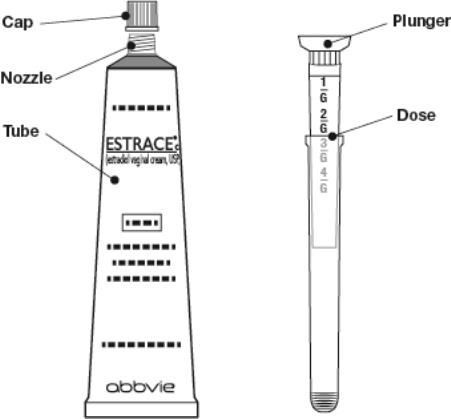Estrace | Estradiol Cream while Breastfeeding

What is Estrace | Estradiol Cream used for?
I am breastfeeding mother and I am using Estrace | Estradiol Cream. Can it have any bad effect on my kid? Shall I search for better alternative?

G. N ursing Mothers ESTRACE should not be used during lactation. Estrogen administration to nursing women has been shown to decrease the quantity and quality of the breast milk. Detectable amounts of estrogens have been identified in the milk of women receiving estrogen therapy. Caution should be exercised when ESTRACE is administered to a nursing woman.
Estrace | Estradiol Cream Breastfeeding Analsys
Estradiol while Breastfeeding
Low RiskCAS Number: 50-28-2
A natural Estrogen that is marketed for oral, injection and topical administration (skin and vaginal).On the chemical form of valerate, it is used in association with a progestin as a combined birth-control compound (e.g. Estradiol + Dienogest) Estradiol is excreted into breast milk in clinically non-significant amount (Nilson 1978) and no problems have been observed in infants whose mothers were treated (Pinheiro 2016). Plasma levels of these infants were undetectable or very low (Pinheiro 2016). After administration in the form of transdermal patches milk levels have been undetectable (Pinheiro 2016, Perheentupa 2004). Despite these data, an older publication associated the use of transdermal estradiol with a case of jaundice and poor weight gain (Ball 1999).There is greater passage to milk when the administration is vaginal. There is evidence (albeit inconsistent) that estrogen-containing pills may decrease milk production, especially during the first few weeks postpartumThey may reduce the protein content of the milk. No problems have been observed in infants whose mothers were treated, except some cases of transient gynecomastia in infants whose mothers were receiving a higher dose than usual. Estrogen exposure in childhood or adolescence, does not influence the subsequent production of milk. The American Academy of Pediatrics states that this medication is usually compatible with breastfeeding.
Estrace | Estradiol Cream Breastfeeding Analsys - 2
Estradiol while Breastfeeding
CAS Number: 50-28-2
Limited information on the use of estradiol during breastfeeding indicates that the route of administration and dosage form have influences on the amount transferred into breastmilk. Vaginal administration results in measurable amounts in milk, but transdermal patches do not. Maternal doses of up to 200 mcg daily transdermally do not increase estradiol or estriol in breastfed infants or cause any adverse effects in breastfed infants. Vaginal administration results in unpredictable peak times for estradiol in breastmilk, so timing of the dose with respect to breastfeeding is probably not useful. A case report of inadequate milk production and inadequate infant weight gain was possibly caused by transdermal estradiol initiated on the first day postpartum, but 2 small studies found no such effect when the drug was initiated after lactation was well established.
What should I do if already breastfed my kid after using Estrace | Estradiol Cream?
Estrace | Estradiol Cream is in the category of low risk, if you have already used it then its not a big deal if health and behavior of baby is good. However your health care provider shall be aware of the fact that you have used Estrace | Estradiol Cream so you should inform him based on your convenience.
I am nursing mother and my doctor has suggested me to use Estrace | Estradiol Cream, is it safe?
Estrace | Estradiol Cream comes in category of low risk and if your doctor is aware that you are breastfeeding it should be ok to use
If I am using Estrace | Estradiol Cream, will my baby need extra monitoring?
Not much monitoring required while using Estrace | Estradiol Cream
Who can I talk to if I have questions about usage of Estrace | Estradiol Cream in breastfeeding?
US
National Womens Health and Breastfeeding Helpline: 800-994-9662 (TDD 888-220-5446) 9 a.m. and 6 p.m. ET, Monday through Friday
UK
National Breastfeeding Helpline: 0300-100-0212 9.30am to 9.30pm, daily
Association of Breastfeeding Mothers: 0300-330-5453
La Leche League: 0345-120-2918
The Breastfeeding Network supporter line in Bengali and Sylheti: 0300-456-2421
National Childbirth Trust (NCT): 0300-330-0700
Australia
National Breastfeeding Helpline: 1800-686-268 24 hours a day, 7 days a week
Canada
Telehealth Ontario for breastfeeding: 1-866-797-0000 24 hours a day, 7 days a week
